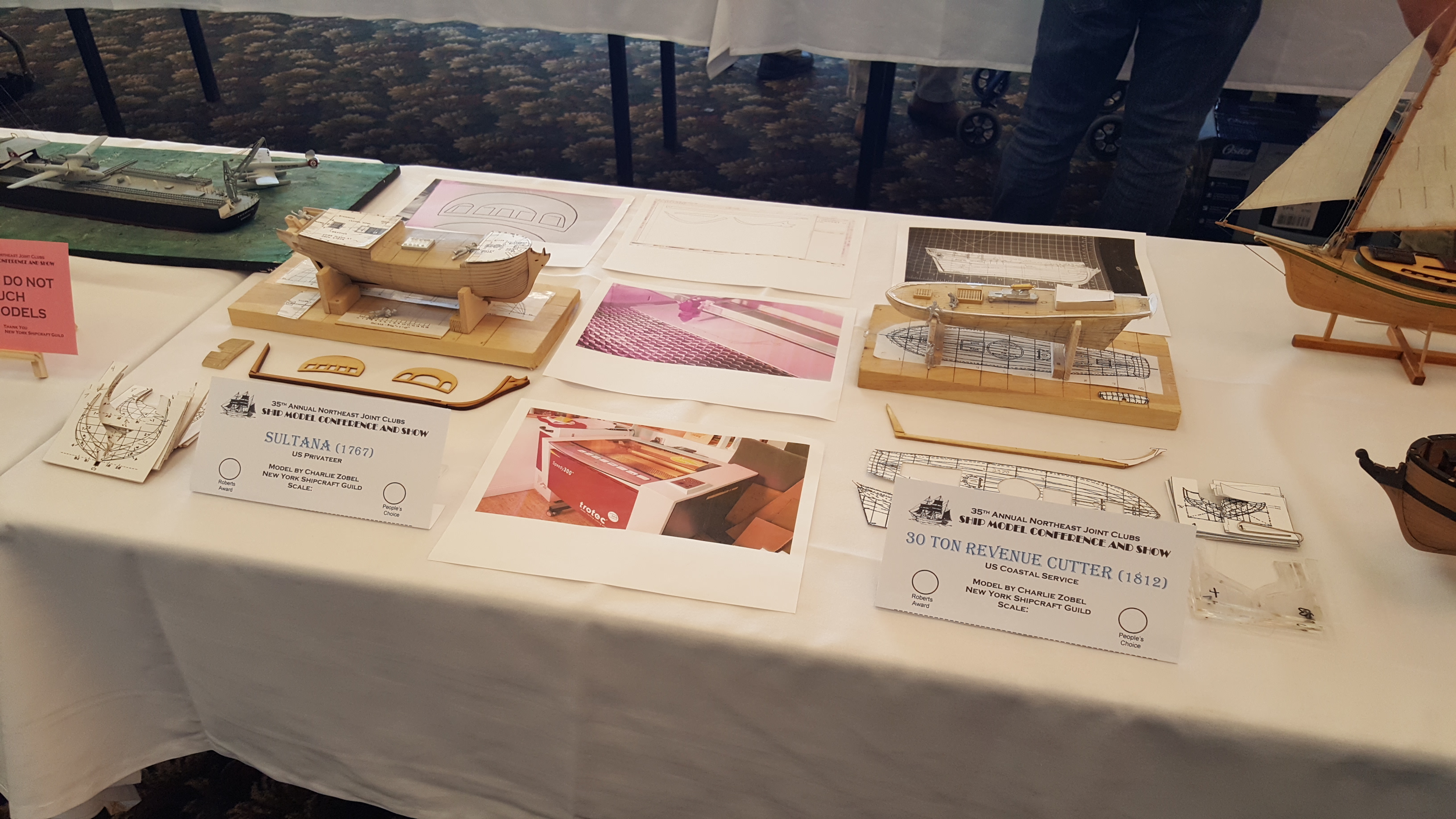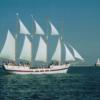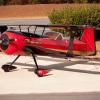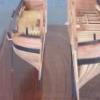MORE HANDBOOKS ARE ON THEIR WAY! We will let you know when they get here.
×
-
Posts
969 -
Joined
-
Last visited
Reputation Activity
-
 CharlieZardoz got a reaction from Elijah in Armed Virginia Sloop by Hill202 - Model Shipways - scale 1:48
CharlieZardoz got a reaction from Elijah in Armed Virginia Sloop by Hill202 - Model Shipways - scale 1:48
Regarding the aeropiccola plank bender (the company which designed it), that's the one I and those in the Brooklyn group (including Dan Pariser) use. It's nice in that you have variation in how you extreme you can bend the planks however we don't bother with the attachment piece, it isn't necessary. Not sure why other plank benders don't have the same shape head it's extremely useful.
-
 CharlieZardoz got a reaction from Hill202 in Armed Virginia Sloop by Hill202 - Model Shipways - scale 1:48
CharlieZardoz got a reaction from Hill202 in Armed Virginia Sloop by Hill202 - Model Shipways - scale 1:48
Regarding the aeropiccola plank bender (the company which designed it), that's the one I and those in the Brooklyn group (including Dan Pariser) use. It's nice in that you have variation in how you extreme you can bend the planks however we don't bother with the attachment piece, it isn't necessary. Not sure why other plank benders don't have the same shape head it's extremely useful.
-
 CharlieZardoz got a reaction from dgbot in Cruizer-class Brig-Sloops of the Royal Navy
CharlieZardoz got a reaction from dgbot in Cruizer-class Brig-Sloops of the Royal Navy
http://www.modelsailingships.com/text/grass_text.html
Hey guys according to this link the ships of 1811/1812 did not have a square tuck stern. So the first Grasshopper probably had one while the second did not. Also says the Epervier did not. Assuming we can trust this one source but that's my opinion that the tuck was probably something removed after 1810 but still not considered obsolete circa 1804. There is a 4/5 year gap in builds for the Cruizer class after 1807 so probability a chance for the plans to be revised a bit.
-
 CharlieZardoz got a reaction from Robin Lous in Armed Virginia Sloop by Hill202 - Model Shipways - scale 1:48
CharlieZardoz got a reaction from Robin Lous in Armed Virginia Sloop by Hill202 - Model Shipways - scale 1:48
Regarding the aeropiccola plank bender (the company which designed it), that's the one I and those in the Brooklyn group (including Dan Pariser) use. It's nice in that you have variation in how you extreme you can bend the planks however we don't bother with the attachment piece, it isn't necessary. Not sure why other plank benders don't have the same shape head it's extremely useful.
-
 CharlieZardoz reacted to DocBlake in Armed Virginia Sloop by Hill202 - Model Shipways - scale 1:48
CharlieZardoz reacted to DocBlake in Armed Virginia Sloop by Hill202 - Model Shipways - scale 1:48
I've never used that kind of plank bender. Joe. The really thin veneers don't really require anything more than a little soaking in water if you need them to turn sharply (lake the stern of the AVS). The first planking of the hull uses much thicker stock in general, but is softer wood and bends easily with soaking. For my second planking on "Independence" which is 1/32" thick, I'm using heat: just an old clothes iron. It works great!
-
 CharlieZardoz reacted to Hill202 in Armed Virginia Sloop by Hill202 - Model Shipways - scale 1:48
CharlieZardoz reacted to Hill202 in Armed Virginia Sloop by Hill202 - Model Shipways - scale 1:48
Do any of you guys use a plank bender like this? I bought it off that auction site ( not sure if I can reference that site here).
-
 CharlieZardoz reacted to dgbot in Armed Virginia Sloop by Hill202 - Model Shipways - scale 1:48
CharlieZardoz reacted to dgbot in Armed Virginia Sloop by Hill202 - Model Shipways - scale 1:48
Clay Feldman the former editor of SIS published a book on building the AVS along with a CD If I remember right. From what I have read it will steer you in the right direction.
David B
-
 CharlieZardoz reacted to DocBlake in Armed Virginia Sloop by Hill202 - Model Shipways - scale 1:48
CharlieZardoz reacted to DocBlake in Armed Virginia Sloop by Hill202 - Model Shipways - scale 1:48
If you plan to stay with this hobby, you DO need a Byrnes saw! It will allow you to mill your own timbers, and free you forever from basswood parts! Crown Timberyard does a nice job supplying lumber, but at a cost, and they don't necessarily stock what you're looking for. Today I picked up a piece of katalox (AKA Mexican ebony) to use for wales and black strakes. It would be hard to find a scale timber supplier who could provide that!
-
 CharlieZardoz reacted to Bill Hime in Armed Virginia Sloop by Hill202 - Model Shipways - scale 1:48
CharlieZardoz reacted to Bill Hime in Armed Virginia Sloop by Hill202 - Model Shipways - scale 1:48
YES.....You do need one...end of story...That is all for now..
Bill
-
 CharlieZardoz reacted to Chapman in Cruizer-class Brig-Sloops of the Royal Navy
CharlieZardoz reacted to Chapman in Cruizer-class Brig-Sloops of the Royal Navy
Moin from Germany.
Sorry, but the plans of the Epervier say something different Square Tuck! Source: NMM
-
 CharlieZardoz reacted to druxey in Cruizer-class Brig-Sloops of the Royal Navy
CharlieZardoz reacted to druxey in Cruizer-class Brig-Sloops of the Royal Navy
Be careful of secondary sources! We come down squarely (sorry about the pun) on the side of square sterns.
-
 CharlieZardoz got a reaction from mtaylor in Cruizer-class Brig-Sloops of the Royal Navy
CharlieZardoz got a reaction from mtaylor in Cruizer-class Brig-Sloops of the Royal Navy
http://www.modelsailingships.com/text/grass_text.html
Hey guys according to this link the ships of 1811/1812 did not have a square tuck stern. So the first Grasshopper probably had one while the second did not. Also says the Epervier did not. Assuming we can trust this one source but that's my opinion that the tuck was probably something removed after 1810 but still not considered obsolete circa 1804. There is a 4/5 year gap in builds for the Cruizer class after 1807 so probability a chance for the plans to be revised a bit.
-
 CharlieZardoz got a reaction from uss frolick in Cruizer-class Brig-Sloops of the Royal Navy
CharlieZardoz got a reaction from uss frolick in Cruizer-class Brig-Sloops of the Royal Navy
http://www.modelsailingships.com/text/grass_text.html
Hey guys according to this link the ships of 1811/1812 did not have a square tuck stern. So the first Grasshopper probably had one while the second did not. Also says the Epervier did not. Assuming we can trust this one source but that's my opinion that the tuck was probably something removed after 1810 but still not considered obsolete circa 1804. There is a 4/5 year gap in builds for the Cruizer class after 1807 so probability a chance for the plans to be revised a bit.
-
 CharlieZardoz got a reaction from Beef Wellington in Cruizer-class Brig-Sloops of the Royal Navy
CharlieZardoz got a reaction from Beef Wellington in Cruizer-class Brig-Sloops of the Royal Navy
http://www.modelsailingships.com/text/grass_text.html
Hey guys according to this link the ships of 1811/1812 did not have a square tuck stern. So the first Grasshopper probably had one while the second did not. Also says the Epervier did not. Assuming we can trust this one source but that's my opinion that the tuck was probably something removed after 1810 but still not considered obsolete circa 1804. There is a 4/5 year gap in builds for the Cruizer class after 1807 so probability a chance for the plans to be revised a bit.
-
 CharlieZardoz reacted to Talos in Cruizer-class Brig-Sloops of the Royal Navy
CharlieZardoz reacted to Talos in Cruizer-class Brig-Sloops of the Royal Navy
I agree with this. Some comments on the points:
The initial Cruizer and Snake prototypes were ordered in 1796 and completed in 1798 under Earl Spencer’s board. One of the other projects Spencer did was give eight different 74-gun 3rd Rate contracts to various private yards. No more Cruizers were ordered until 1801 when they needed them. A concern, but the UK running out of oak is an exaggerated myth. The real problem was supplies were getting harder to procure at a price the admiralty wanted to pay, and they let the reserves dwindle and for a few years their supplies were tight. By the end of the war they had plenty again though prices were still above pre-war levels. The more acute shortages were in difficult pieces, like knees. The Cruizer and Snake were designed before there was any wartime production crunch, so they were hardly austere designs. Fully worked-out designs to all naval standards, designed for global operations anywhere the Royal Navy was and they took their time with it. They really were in a sweet spot between capability and economy, as were the Cherokees after them. Incidentally, the part that screams cutter to me the most is that little sheer by the bow, which doesn’t match the deck line. Nothing wrong with being inspired by cutter designs. Those were the UK’s most notoriously seaworthy small craft, coastal vessels designed for channel work and the like. This, not a timber shortage, was the real problem. So few ships were sailing at their proper, rated complements all the time, most had larger proportions of pressed landsmen and long overseas deployments and brutal blockade periods both wore down what crews they did scrounge together. Cruizer’s crew size was typical of both ship and brig sloops of her size. Even HMS Peacock (ex-USS Wasp) had an identically rated crew of 121 in British service and Swan only had four extra men under older crew regulations, and 121 after 1794. Between the 32-pounder carronades (which were also added to small post ships like Cyane) giving a heavier armament for their size, while still being large enough for proper ocean sailing and deployment, they were very versatile craft. They weren’t particularly designed for economy so much as being a standard and modern design in an economical size class (compared to all the older quarterdeck sloops based on designs dating back decades). -
 CharlieZardoz reacted to Chuck Seiler in What is your favorite wood to plank the deck?
CharlieZardoz reacted to Chuck Seiler in What is your favorite wood to plank the deck?
I normally go with holly with either "Natural" stain finish or wipe on poly. Recently I saw a model using beech for decking. It looked good...scale oak appearance. .
-
 CharlieZardoz reacted to uss frolick in Cruizer-class Brig-Sloops of the Royal Navy
CharlieZardoz reacted to uss frolick in Cruizer-class Brig-Sloops of the Royal Navy
I think that it is now safe to conclude that all Cruisers had the square-tuck stern. This was probably done because nearly all (if not all) were built in private yards, where the standards were much lower than naval yards, using every dwindling bit of available oak timber, under emergency conditions, so it was thought that the stern, a potential weak point, would have to be built as strong as possible, even if that meant using a strong, tried and true, and ancient method of framing. I suspect that the earlier Swans had a much stouter frame.
One of the editions of Steele's Shipbuilders Repository, c.1805, includes folded plans of the Cruisers, so I wonder if he mentions their unusual stern frames?
-
 CharlieZardoz reacted to uss frolick in Cruizer-class Brig-Sloops of the Royal Navy
CharlieZardoz reacted to uss frolick in Cruizer-class Brig-Sloops of the Royal Navy
Thanks for the enlargement, Charlie! Lyon's pic is small. Is that the fashion piece shown on the body plan? It's very feint, but it looks like something is there. I'm leaning the other way now too. But why would an oak ship need one? Only six of the hundred or so brigs were built of fir ... The Scout's framing plan would be more decisive.
-
 CharlieZardoz got a reaction from mtaylor in Cruizer-class Brig-Sloops of the Royal Navy
CharlieZardoz got a reaction from mtaylor in Cruizer-class Brig-Sloops of the Royal Navy
Well which Cruizer class brigs are confirmed as not having a square tuck?
-
 CharlieZardoz reacted to Beef Wellington in Cruizer-class Brig-Sloops of the Royal Navy
CharlieZardoz reacted to Beef Wellington in Cruizer-class Brig-Sloops of the Royal Navy
I think it shows the square tuck pretty clearly...I'll bet my lunch money.
-
 CharlieZardoz got a reaction from mtaylor in Cruizer-class Brig-Sloops of the Royal Navy
CharlieZardoz got a reaction from mtaylor in Cruizer-class Brig-Sloops of the Royal Navy
Here is scout's plan from Greenwich archives, what do you think guys?
-
 CharlieZardoz got a reaction from Beef Wellington in Cruizer-class Brig-Sloops of the Royal Navy
CharlieZardoz got a reaction from Beef Wellington in Cruizer-class Brig-Sloops of the Royal Navy
Here is scout's plan from Greenwich archives, what do you think guys?
-
 CharlieZardoz reacted to uss frolick in Cruizer-class Brig-Sloops of the Royal Navy
CharlieZardoz reacted to uss frolick in Cruizer-class Brig-Sloops of the Royal Navy
The square tuck appears flat from the side. That dark vertical line, about two feet long, at the back of the waterline, which is part of a narrow triangle, denotes one.
Irene/Grasshopper has one too. Curious. Petrajus says, on page 62-3:
"The Irene, together with a number of brig-sloops and ship-sloos and even frigates of the time, was not only built of fir, but had what was called a 'square-tuck' besides. It was a curious step back in history, which may have had something to do with the necessity for the Admiralty to have a great many plain, but serviceable ships built in the shortest amount of time. Normally, the connection between the transom piece and the stern post was achieved between athwartship timbers, called 'transoms '. The principle one was the 'wing transom'. It formed the base for the 'counter timbers', and the hooding ends of the planking were fastened to it, inasmuch as they could not be brought into the stern post rabbet.
The lowest transom was generally short and sharp, like the letter 'V', the top one approached the shape of the beam, while the intermediate transoms formed a transition between these extremes. The transoms were dovetailed into the fashion pieces and let in on the stern post, besides being bolted to them. The did the same service to the planking of the stern as the frames did to that of the sides.
The closing of the counter and the stern was affected by a frame of cross beams and stanchions, arranged in accordance with the number of windows, ports, etc.
As already pointed out, the construction of the Irene's stern frame was unusually simple. 'Fayed' upon the fore side of the main post was a sort of inner post, on top of the rested the transom, let in on the stern post. Just as in the 17th century, the fashion pieces served to accommodate the hooding ends of the bottom planking as well as the planking of the tuck. There was only this difference that they were let now let into the rabbets, cut in the fashion pieces, so that these timbers remained visible for their greater part. That this was so, appears from the clause in the contract for the Raven, relating to the matter, and the expansion plan, mentioned before."
The Raven's contract given in appendix 1, page 271, notes:
"FASHION PIECES: To be sided 11 inches, rabbeted, on the outside, to receive the plank of the bottom, and on the aft side, to receive the plank of the tuck."
According to David Lyon, in The Sailing Navy List, page 142, Raven is listed as one of only six fir built brigs. They are:
Beagle, Elk, Harrier, Raven, Reindeer, and Saracan. Victor and Zebra were built in Bombay out of native teak.
There are separate plans of for the oak, fir and teak versions.
The plans of the Scout, of 1804, to which nearly all were built, shows, on page 140, no square tuck stern ... ! But Grasshopper was an oak brig. Did Petrajus make the Irene fit the wrong draught and contract?
So I guess I was right the first time? Now I am really confused!
-
 CharlieZardoz got a reaction from mtaylor in Cruizer-class Brig-Sloops of the Royal Navy
CharlieZardoz got a reaction from mtaylor in Cruizer-class Brig-Sloops of the Royal Navy
Well frolick when was the square tuck eliminated completely? We know Enterprize was built with one in 1799 and then later removed so it could be a time period thing since this class was built over the course of a few decades. Also are these all builders plans which are all sort of based off the original cruizer plan (with a few bits redrawn) so looking at them I honestly can't tell a difference... To tuck or to untuck that is the question. Tehe
-
 CharlieZardoz got a reaction from mtaylor in Cruizer-class Brig-Sloops of the Royal Navy
CharlieZardoz got a reaction from mtaylor in Cruizer-class Brig-Sloops of the Royal Navy
Also here is the image of the Scorpion stern from that excellent rc model from the link I posted. Square tuck not sure if that's accurate based on what frolick is saying.









